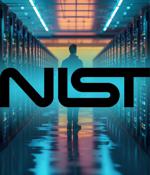Security News

It’s been a decade since the National Institute of Standards and Technology (NIST) introduced its Cybersecurity Framework (CSF) 1.0. Created following a 2013 Executive Order, NIST was tasked with...

Quantum computers are rapidly increasing the ability for high-performance computing, and the new standards are ready for immediate use, NIST said. "Quantum computing technology could become a force for solving many of society's most intractable problems, and the new standards represent NIST's commitment to ensuring it will not simultaneously disrupt our security," said Under Secretary of Commerce for Standards and Technology and NIST Director Laurie E. Locascio, in a statement.

From the Federal Register: After three rounds of evaluation and analysis, NIST selected four algorithms it will standardize as a result of the PQC Standardization Process. The public-key...

The U.S. National Institute of Standards and Technology (NIST) has released the first three encryption standards designed to resist future cyberattacks based on quantum computing technology. [...]

NIST has finalized its principal set of encryption algorithms designed to withstand cyberattacks from a quantum computer. The announced algorithms are specified in the first completed standards...

The National Institute of Standards and Technology today released the long-awaited post-quantum encryption standards, designed to protect electronic information long into the future - when quantum computers are expected to break existing cryptographic algorithms. The finalized standards include three post-quantum cryptographic algorithms.

While estimates just a few years old suggested that a quantum computer capable of running Shor's Algorithm would not be operationally available until 2029 or later, more recent research to produce fault-tolerant quantum systems, such as the 48 qubit system produced by a team at Harvard, combined with news of PsiQuantum's million qubit system slated to come online in 2027, suggest that the Q-Day horizon, however secretively or publicly it plays out, is coming faster than most anticipated. According to NIST, the "Goal of post-quantum cryptography is to develop cryptographic systems that are secure against both quantum and classical computers and can interoperate with existing communications protocols and networks." In July 2022, NIST published four draft PQC algorithms.

Your profile can be used to present content that appears more relevant based on your possible interests, such as by adapting the order in which content is shown to you, so that it is even easier for you to find content that matches your interests. Content presented to you on this service can be based on your content personalisation profiles, which can reflect your activity on this or other services, possible interests and personal aspects.

Week in review: Attackers trying to access Check Point VPNs, NIST CSF 2.0 security metrics evolution
Attackers are probing Check Point Remote Access VPN devicesAttackers are trying to gain access to Check Point VPN devices via local accounts protected only by passwords, the company has warned on Monday. The evolution of security metrics for NIST CSF 2.0Combining effective use of metrics plus a deeper understanding of how security processes play out is the best way to build more security agility and enable teams to react more quickly and effectively.

The NVD started slowing down its CVE enrichment efforts earlier this year, and NIST confirmed that they are working on a multi-pronged solution that will include improved tools and methods, as well as establishing a consortium that will help addressed various challenges. Tanya Brewer, program manager at the NVD, said in April that the NVD program is considering many changes to improve software identification, automate CVE analysis activities, make NVD data more easy to "Consume" and customize, develop capabilities to publish additional kinds of data, and more.